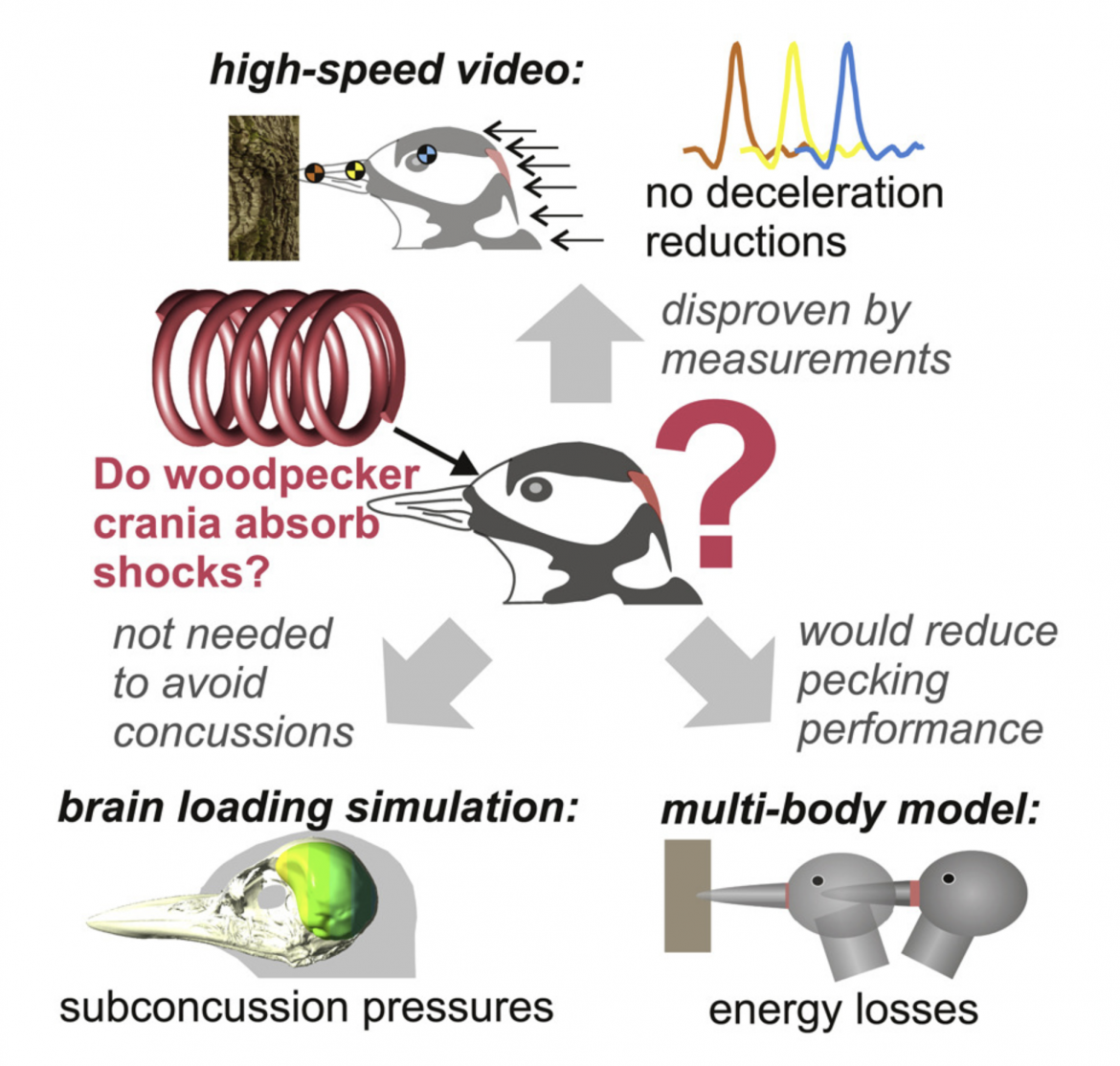
In the News:
Audubon magazine, July 14, 2022: New Study Shakes Up Long-held Belief on Woodpecker Hammering
-----------
Summary
The skull of a woodpecker is hypothesized to serve as a shock absorber that minimizes the harmful deceleration of its brain upon impact into trees and has inspired the engineering of shock-absorbing materials and tools, such as helmets. However, this hypothesis remains paradoxical since any absorption or dissipation of the head’s kinetic energy by the skull would likely impair the bird’s hammering performance and is therefore unlikely to have evolved by natural selection. In vivo quantification of impact decelerations during pecking in three woodpecker species and biomechanical models now show that their cranial skeleton is used as a stiff hammer to enhance pecking performance, and not as a shock-absorbing system to protect the brain. Numerical simulations of the effect of braincase size and shape on intracranial pressure indicate that the woodpeckers’ brains are still safe below the threshold of concussions known for primate brains. These results contradict the currently prevailing conception of the adaptive evolution of cranial function in one of nature’s most spectacular behaviors.